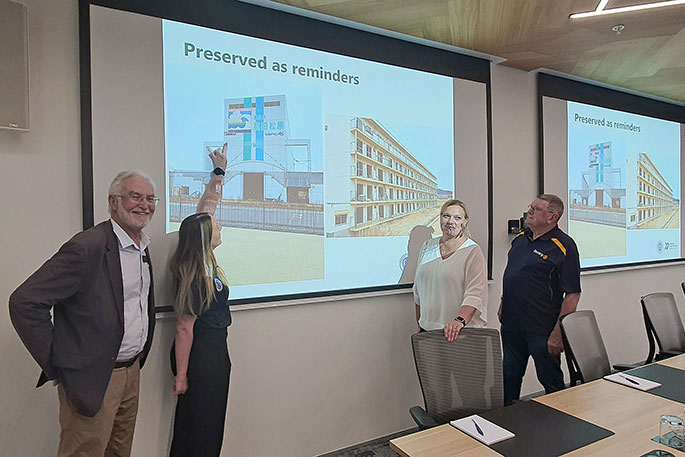More than a quarter of the deaths from the tsunami that hit Japan’s eastern coast in 2011, were due to people being trapped in their cars while trying to escape and having to abandon them.
Two senior Bay of Plenty emergencymanagement advisers, Liz Oliver from Tauranga City Council and Jo Lynskey from Western Bay District Council, presented their findings to Whakatāne Rotary from their exchange trip to Japan earlier this year.
The trip was funded by the Tokyo Metropolitan University, to learn about the impacts and recovery from earthquake and resulting tsunami, which reached 39 metres in height, at its peak.
A presentation they gave to a meeting of Whakatāne District Council last month made such an impression on councillor John Pullar he invited them to return to share their experiences with Whakatāne Rotary, of which he is a member.
They say that although the event is known as the Great Eastern Japan Earthquake, 98 per cent of damage had been attributed to the tsunami, not the earthquake. More than 18,000 were killed, despite Japan having a significant history of tsunami.
“There were several actions that highly impacted their evacuations. So 26 per cent of fatalities in surveyed areas were actually caused by people being stuck in or abandoning their vehicles during the tsunami. I’m sure people have seen photos of more recent evacuations (In the Bay of Plenty) where everyone jumps in their cars and tries to go and congestion hits,” says Liz.
They say that although Japan had extremely good planning in place due to a long history of tsunami, and had a high level of compliance, it did not help in every situation.
Breakwaters designed to protect towns from tsunami of up to 3 metres gave people a false sense of security. In other cases people did evacuate but returned to their homes after 15 minutes.
“Previous tsunami arrival times in the area were within a 15-minute time period so some people did evacuate, but when it started to get a bit longer people thought there wasn’t going to be a tsunami this time. We often think lived experience will mean there will be good decision-making. In this case it did impact some people negatively,” says Jo.
The schools in particular had “a phenomenal sense of planning”, says Liz.
Out of all the people that were killed, only 75 were school students. However, even among schools was a case poor planning cost lives.
“Of those 75 school students killed, 74 were from one school, which was two miles inland so was not considered a major risk.”
The school had a large hill 30 seconds walk from their school yard. Instead, because they did not have a detailed plan in place, they evacuated them toward a bridge out of town, and died.
"There were 11 teachers on site, only one survived and four students. They were the ones that weren’t compliant. They ran for the hill.”
Another school principal is still lauded as a hero in his town for quickly altering the planned evacuation route.
ather than walking down the school driveway and then turning to go up the hill he realised there was no time and instead took a shorter route over the back fence.
“The teachers were, literally,throwing the children over the back fence. Now, they’ve actually put steps up the back so they don’t have to walk toward the water to get away from the water.”
They also looked at the different ways various towns had rebuilt, extremities of which included managed retreat of all low-lying areas and the building of sea walls of over 15 metres high.
Both women say they found it impossible to imagine walls of this size being built in New Zealand.
“Imagine Ōhope Beach blocked off by a 15-metre sea wall ... It would never get across the line that would be acceptable with our connection to the sea. It was that way in Japan as well. However, the people we spoke to said, ‘at what point do you lose that much of your population and not consider it’.”
Tsunami Tendenko has become the byword for teaching the community about how to respond to a tsunami. Tendenko, meaning “each one individually”, encourages each person to run to a high place quickly.
“Children as young as four and five know exactly what it means. It means you are responsible for yourself and you need to know what to do … If the majority know what to do, know where to go and know what happens when you get there, then they can save each other as a whole."
Public Interest Journalism funded through NZ On Air.




0 comments
Leave a Comment
You must be logged in to make a comment.